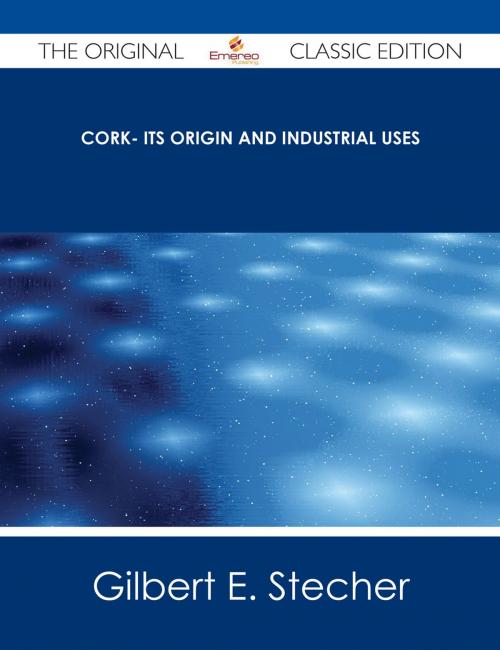Cork- Its Origin and Industrial Uses - The Original Classic Edition
Nonfiction, Reference & Language, Reference, Fiction & Literature| Author: | Gilbert E. Stecher | ISBN: | 9781486448197 |
| Publisher: | Emereo Publishing | Publication: | March 18, 2013 |
| Imprint: | Emereo Publishing | Language: | English |
| Author: | Gilbert E. Stecher |
| ISBN: | 9781486448197 |
| Publisher: | Emereo Publishing |
| Publication: | March 18, 2013 |
| Imprint: | Emereo Publishing |
| Language: | English |
Finally available, a high quality book of the original classic edition of Cork- Its Origin and Industrial Uses. It was previously published by other bona fide publishers, and is now, after many years, back in print.
This is a new and freshly published edition of this culturally important work by Gilbert E. Stecher, which is now, at last, again available to you.
Get the PDF and EPUB NOW as well. Included in your purchase you have Cork- Its Origin and Industrial Uses in EPUB AND PDF format to read on any tablet, eReader, desktop, laptop or smartphone simultaneous - Get it NOW.
Enjoy this classic work today. These selected paragraphs distill the contents and give you a quick look inside Cork- Its Origin and Industrial Uses:
Look inside the book:
From this meager description we at least can learn what “corkwood” is, the limited sphere of its growth, the constant care necessary to insure a successful harvest or gathering, the peculiarities of the tree, its longevity and the general mode of preparing the bark for shipment; the narration in no wise doing justice to this most interesting material, in its natural state, for its growing is a fascinating tale in itself; but for the purpose of this writing the foregoing has been deemed sufficient to convey an understanding of it. ...Their walls or sides are composed chiefly of a substance called cellulose, frequently associated with lignine, or woody matter, and with cork, which last is a nitrogenous substance found in many portions of plants, but is especially developed in the outer cork of exogenous trees, that is, belonging to an order, the stems of which grow by the addition of layers of fresh cellulose tissue outside the woody part and inside the bark. ... Anderson was most deeply impressed with the elasticity of cork, and has the following to say upon his findings: “It would seem difficult to discover any new properties in a substance so familiar as cork, and yet it possesses qualities which distinguish it from all other solid or liquid bodies, namely, its power of altering its volume in a very marked degree in consequence of change of pressure.
Finally available, a high quality book of the original classic edition of Cork- Its Origin and Industrial Uses. It was previously published by other bona fide publishers, and is now, after many years, back in print.
This is a new and freshly published edition of this culturally important work by Gilbert E. Stecher, which is now, at last, again available to you.
Get the PDF and EPUB NOW as well. Included in your purchase you have Cork- Its Origin and Industrial Uses in EPUB AND PDF format to read on any tablet, eReader, desktop, laptop or smartphone simultaneous - Get it NOW.
Enjoy this classic work today. These selected paragraphs distill the contents and give you a quick look inside Cork- Its Origin and Industrial Uses:
Look inside the book:
From this meager description we at least can learn what “corkwood” is, the limited sphere of its growth, the constant care necessary to insure a successful harvest or gathering, the peculiarities of the tree, its longevity and the general mode of preparing the bark for shipment; the narration in no wise doing justice to this most interesting material, in its natural state, for its growing is a fascinating tale in itself; but for the purpose of this writing the foregoing has been deemed sufficient to convey an understanding of it. ...Their walls or sides are composed chiefly of a substance called cellulose, frequently associated with lignine, or woody matter, and with cork, which last is a nitrogenous substance found in many portions of plants, but is especially developed in the outer cork of exogenous trees, that is, belonging to an order, the stems of which grow by the addition of layers of fresh cellulose tissue outside the woody part and inside the bark. ... Anderson was most deeply impressed with the elasticity of cork, and has the following to say upon his findings: “It would seem difficult to discover any new properties in a substance so familiar as cork, and yet it possesses qualities which distinguish it from all other solid or liquid bodies, namely, its power of altering its volume in a very marked degree in consequence of change of pressure.















